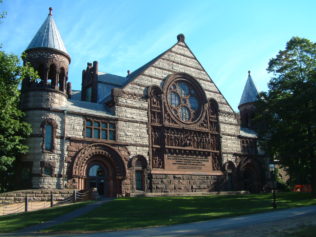In 1997, Darlene Clark Hine came across an essay in which Harlem Renaissance writer Arna Bontemps argued that black Chicago had its own, little-known renaissance that began in the 1930s and rivaled the famous one that occurred in 1920s New York.
“I read this and said, ‘What in the world?'” said Hine, a professor of history and African-American studies at Northwestern University. “Bontemps was saying that Chicago had a major black arts movement without finger bowls and highfalutin intellectuals. Most of Chicago’s artists were hardworking, working-class people creating the people’s art.”
Bontemps’ essay was the inspiration for “The Black Chicago Renaissance,” a recently released anthology published by University of Illinois Press and co-edited by Hine and Indiana University professor John McCluskey Jr.
The book offers highly readable essays from scholars who tell stories about the artists — including some Harlem Renaissance ex-pats who came to Chicago — and the conditions that contributed to a major arts movement in the city that lasted for more than two decades.
McCluskey, a professor emeritus of African-American and African Diaspora studies, said even before the book was published there was significant pushback regarding whether a Chicago Renaissance really existed.
“New York was important, but no city has a monopoly on art,” he said. “Even the Pullman porters were going from city to city dropping off culture. We do a disservice when we forget (the black arts movements) in Chicago, Los Angeles, Washington, D.C., and later, Atlanta.”
Poet Arna BontempsBut a renaissance is a big deal. A rebirth. A reinvention. Did that happen in Chicago?
Hine said it did, with some major differences between Harlem and Chicago.
Unlike the Harlem Renaissance, from about 1919 to the mid-1930s, the Chicago movement didn’t have as its face such well-known intellectuals as W.E.B. Du Bois. Chicago artists didn’t have relatively large numbers of wealthy white patrons who helped to support their art. In addition, Chicago, unlike New York, wasn’t the publishing mecca of the country, so artists and their work weren’t as readily introduced to a national audience.
But Chicago was a mecca in other ways.
It had an influx of new residents from the South who mixed their culture with that of those already here. For example, Thomas Dorsey, the father of gospel music, was blending the raucous music of the Southern Pentecostal Church with the showmanship of the city’s blues district.
Chicago had thriving black businesses and enough residents who worked in the steel mills, factories and meat-packing industry to support the arts.
The city also had a group of young artists who wove together art, politics and the struggle for civil rights…
Read more: Dawn Turner Trice, Chicago Tribune


